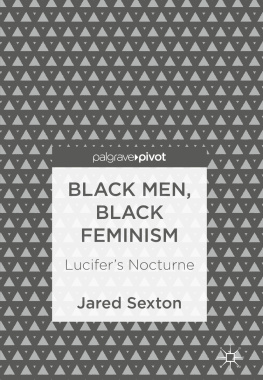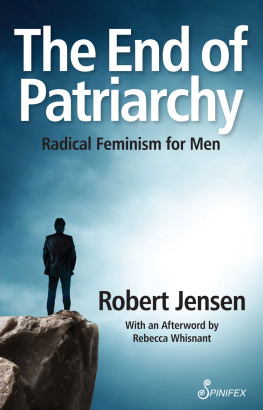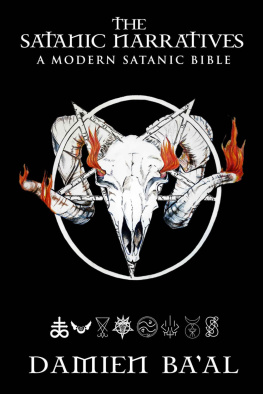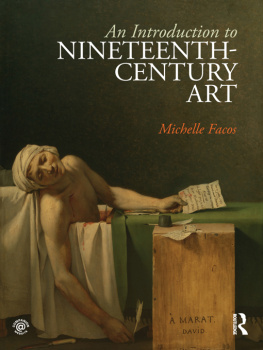Satanic Feminism
LUCIFER AS THE LIBERATOR OF WOMAN
IN NINETEENTH-CENTURY CULTURE
Per Faxneld


Oxford University Press is a department of the University of Oxford. It furthers the Universitys objective of excellence in research, scholarship, and education by publishing worldwide. Oxford is a registered trade mark of Oxford University Press in the UK and certain other countries.
Published in the United States of America by Oxford University Press 198 Madison Avenue, New York, NY 10016, United States of America.
Oxford University Press 2017
All rights reserved. No part of this publication may be reproduced, stored in a retrieval system, or transmitted, in any form or by any means, without the prior permission in writing of Oxford University Press, or as expressly permitted by law, by license, or under terms agreed with the appropriate reproduction rights organization. Inquiries concerning reproduction outside the scope of the above should be sent to the Rights Department, Oxford University Press, at the address above.
You must not circulate this work in any other form and you must impose this same condition on any acquirer.
CIP data is on file at the Library of Congress
ISBN 9780190664473
eISBN 9780190664497
In loving memory of my mother,
Olga Christina Faxneld (19492016),
who was always there, and always inspired me
Contents
MANY PEOPLE HAVE read the manuscript for this book (or portions thereof) in various versions. Erik af Edholm, whose sharp eye for detail and broad learning never cease to amaze me, made the most heroic reading efforts. Peter Jacksons leaps between different contexts inspired me to take this project places I could not have foreseen would be rewarding to visit. Olav Hammer made thoughtful recommendations concerning the manuscript as a whole in the final stages of the writing process, and Henrik Bogdan provided a rigorous probing of the finished text. Niklas Foxeus repeatedly posed challenging questions that prompted me to develop unclear arguments. Michael Marlow and Hedda Jansson contributed pertinent observations concerning Jewish demonology and turn-of-the-century feminism, respectively.
Jessica Moberg, who is always bubbling over with contagious enthusiasm for all the weird and wonderful things in the religious field, furnished some very good advice regarding my introduction chapter. Translations from French have been inspected by Guillaume Le Huche, who has also imparted suggestions for many of the analytical parts. Jesper Aagaard Petersen, a leading scholar of Satanism, has been a constant conversation partner. Manon Hedenborg-White generously copy-edited the first draft of the entire manuscript, with a bottle of champagne as her only remuneration.
Several further friends and colleagues have also read and commented on portions of the book, ranging from a page or two to several chapters. I am indebted to the following for offering their assistance in this regard: Stefan Arvidsson, Justin Meggitt, Peter Halden, Mattias Fyhr, Kristian Pettersson, Eva Kingsepp, Kennet Granholm, Egil Asprem, Sasha Chaitow, Dylan Burns, Julian Strube, Hjalmar Falk, Tommy Kuusela, Johan Nilsson, Melanie Davis, Scot D. Ryersson, Michael Orlando Yaccarino, Tobias Harding, Boaz Huss, Fredrik Skott, Fredrik Gregorius, Caroline Levander, Mikael Hll, Asbjrn Dyrendal, Henrik Johnsson, Hans-Roland Johnsson, and Per Norstrm. Especially the final seven deserve special thanks, for their precise and constructive criticism of huge amounts of text.
My mother, artist and author Olga Christina Faxneld, fostered my enthusiasm for intellectual and artistic pursuits early on, and was consistently supportive of the somewhat outr project of writing a monograph on Satanic feminism. Our continuous vibrant exchanges, on all the important topics of this world, remain the most significant of my life. She passed away in 2016, and this book is dedicated to her memory.
Reverse everything. Make women the point of departure in judging, make darkness the point of departure in judging what men call light.
MARGUERITE DURAS (interviewed by Susan Husserl-Kapit in 1975)
SATAN AND THE SUFFRAGETTES: AN UNEXPECTED ALLIANCE
The late nineteenth and early twentieth century: A world-leading female esotericist, whose books sell hundreds of thousands of copies, designates Lucifer the bringer of enlightenment. In Paris, a lesbian poetess publishes a volume where she praises Satan as the creator of womankind as well as the inspirer of feminine poetry and love between women. Americans are shocked when a twenty-year-old woman from Butte, Montana, writes a provocative autobiographical bestseller, in which she uses the Devil as a symbol of freedom from conservative social mores. In particular, she criticizes the oppression of women. Radical feminists in the United States and Europe collaborate on what they call The Womans Bible. It eulogizes Eves consumption of the forbidden fruit in the Garden of Eden, and Satans function in the tale is claimed to be that of a benign Socratic mentor figure. Elsewhere, a distinguished American suffragette portrays Black Masses, supposedly celebrated by medieval witches, as an act of feminist insubordination towards God, his priests, and the worldly lords who have all denied the rights of women. In a critically well-received and commercially successful novel by a young Englishwoman, a kindly Satan helps the female protagonist achieve self-actualization and autonomy from her male relatives. An incredibly wealthy Italian marchioness, a world-famous stage actress, and an illustrious silent film star play identity games that involve taking on the role of Satan or portraying themselves as being in league with this entity. Numerous Parisian women adorn themselves with jewellery sensuously depicting Eves collusion with the Devil and her partaking of the forbidden fruit. How are we to understand these texts, practises and artefacts?
FROM MISOGYNY TO SUBVERSION: SATANIC FEMINISM
The notion of women as especially receptive to Satans guiles is very old and quite prominent throughout much of Christianitys history. This idea has often derived its authority from Genesis 3, which shows Eve to be the first one to succumb to the serpents temptation. Outside the realm of religion, it frequently appeared in fiction, art, and anti-feminist polemics during the nineteenth century. This time period also witnessed the emergence of a very different approach to the theme. Some women (and the occasional man), typically influenced by the Romantics transformation of Satan into a hero, now performed counter-readings of Christian misogynist traditions. Hereby, Lucifer became reconceptualized as a feminist liberator of womankind. In these counter-myths, he is seen as an ally in the struggle against a patriarchy supported by God the Father and his male priests. Eves ingestion of the forbidden fruit becomes a heroic act of rebellion against the tyranny of God and Adam. This closely parallels how socialists like Mikhail Bakunin (18141876) used Satans battle with God as a symbol of their fight against a capitalist and monarchist society (God being the ultimate monarch). Many left-wing thinkers felt that Christianity was a pillar of this social order. Historically, the figure of the Devil had functioned as a tool for patrolling social borders, since he symbolized lust, hedonism, pride, et cetera. Freethinkers, such as libertines or Romantic and Decadent writers, were naturally quite attracted to some of these supposed vices. Satan thus came to be employed by some as a titillating emblem of various forbidden pleasures and urges, alongside socialist use of the figure as the prototypical altruistic rebel. Satanic feminism, as I have chosen to designate the phenomenon that is the topic of my study, reflects this spectrum of radicalism and is, as we shall see, intertwined with prominent anticlerical, left-wing, artistic, and esoteric currents of its time. This phenomenon will also be scrutinized to some extent, as there exists a certain dialectic between these two simultaneously corresponding and opposing uses of the figure of Satan in relation to feminism.






